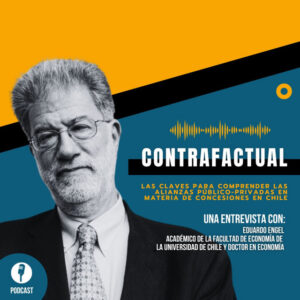Fernando Luco, Department of Economics, Texas A&M University
Firms that compete with one another, even in narrowly defined markets, can be quite different. Competing firms may differ on technology, production capacity, corporate structure, market experience, the characteristics and experience of their employees, among others. Do these differences impact the type of strategic behavior that these firms engage in when they compete against one another?
Though intuitively one could expect that differences in firm characteristics would impact the strategies they choose, most models used to analyze how firms compete in oligopoly markets do not assign a relevant role to the potential existence of heterogeneity in strategic behavior. While one branch of the empirical literature, for example, is rich in models of strategic equilibrium in which the competitors are asumed to be fully rational, another branch of the economic literature has proposed a number of theoretical alternatives to Nash equilibrium to explain the behavior observed in the lab. One of these alternative is the Cognitive Hierarchy (CH) model proposed by Camerer, Ho and Chong (2004). In the CH model, competitors differ in their level of strategic sophistication, but all of them are boundedly rational.
In a forthcoming paper (Hortacsu, Luco, Puller, and Zhu, 2019), we argue that the CH model captures observed behavior in an oligopoly pricing setting quite well, in the context of electricity generattion in the Texas electricity market. In previous work (Hortacsu and Puller, 2008), it was documented that electricity generators in Texas engage in very different pricing strategies, with some generators consistently deviating from what traditional (fully rational) models would predict. In this paper, we show that the CH model empirically captures the heterogeneity observed pricing strategies quite well.
Though the CH model was used to explain observed behavior in the field by Goldfarb and Xiao (2011) in the context of entry in local telephone markets, using this model in the context of oligopoly pricing decisions is significantly more complex. To understand why this is the case, consider the empirical approach that is commonly used by researchers to study firm behavior. In these studies, researchers rely on models of competition that assume that firms maximize expected profits. Researchers then use these models to estimate the unobserved marginal costs that rationalize the observed prices. This type of research approach is often used, for example, to examine how proposed mergers would affect pricing behavior.
To be able to apply this research strategy, however, the researcher needs the mapping between the unobserved marginal costs and the observed prices to be unique. If this mapping, which correspond to a model of competitive conduct, is not unique, then multiple combinations of behavior and costs may be consistent with the observed prices, thus making it impossible to separately identifying the strategy followed by the firms from the unobserved costs.
The identification problem just described can be overcome if the researcher observes both prices and marginal costs. In this case, the researcher can use the data on marginal costs to identify the beliefs that result in a firm choosing a specific pricing strategy. This is the case that we study in this paper. We exploit the context of the Texas electricity spot market for which we have detailed data on individual firms’ marginal cost of production, their bids into power auctions, and their characteristics.
We find that the strongest determinant of a firm’s strategic sophistication -in the context of electricity generation in Texas- is the size of the firms, with larger generators being more strategically sophisticated. We also find that manager characteristics, such as academic training, play a smaller but still significant role. For example, we find that firms that employ individuals with economic, business, or finance background for their trading desks (that decide the bids that firms submit) have higher sophistication that firms that do not. Importantly, we also show that the CH model not only fits the data quite well, but also that it predicts bidding behavior out-of-sample better than more traditional models of oligopolistic competition.
Finally, we use our model to examine how increasing sophistication of low-type firms affects market efficiency. We do this considering cases in which we exogenously increase the sophistication of a firm without affecting market structure (i.e., similar to what hiring better managers or bringing in a consulting team would do for the firm), and through mergers. We show that increasing sophistication of small firms increases efficiency but at a decreasing rate. Further, we show that mergers between low- and high-sophistication firms that do not generate merger-specific cost synergies (and so are unlikely to be approved by competition authorities) may increase overall efficiency as the power plants formerly owned by the low-type firm are called to generate under the new ownership structure. However, we also show that when medium- and high-type firms merge, the increase in concentration and market power dominates and efficiency decreases.
References
Camerer, Colin F., Teck-Hua Ho, and Juin-Kuan Chong. 2004. “A Cognitive Hierarchy Model of Games.” Quarterly Journal of Economics, 119(3): 861– 898.
Goldfarb, Avi, and Mo Xiao. 2011. “Who Thinks about the Competition: Managerial Ability and Strategic Entry in US Local Telephone Markets.” American Economic Review, 101(7): 3130–3161.
Hortacsu, Ali, Fernando Luco, Steven L. Puller, and Dongni Zhu 2019. “Does Strategic Ability Affect Efficiency? Evidence from Electricity Markets.” American Economic Review, Forthcoming.










